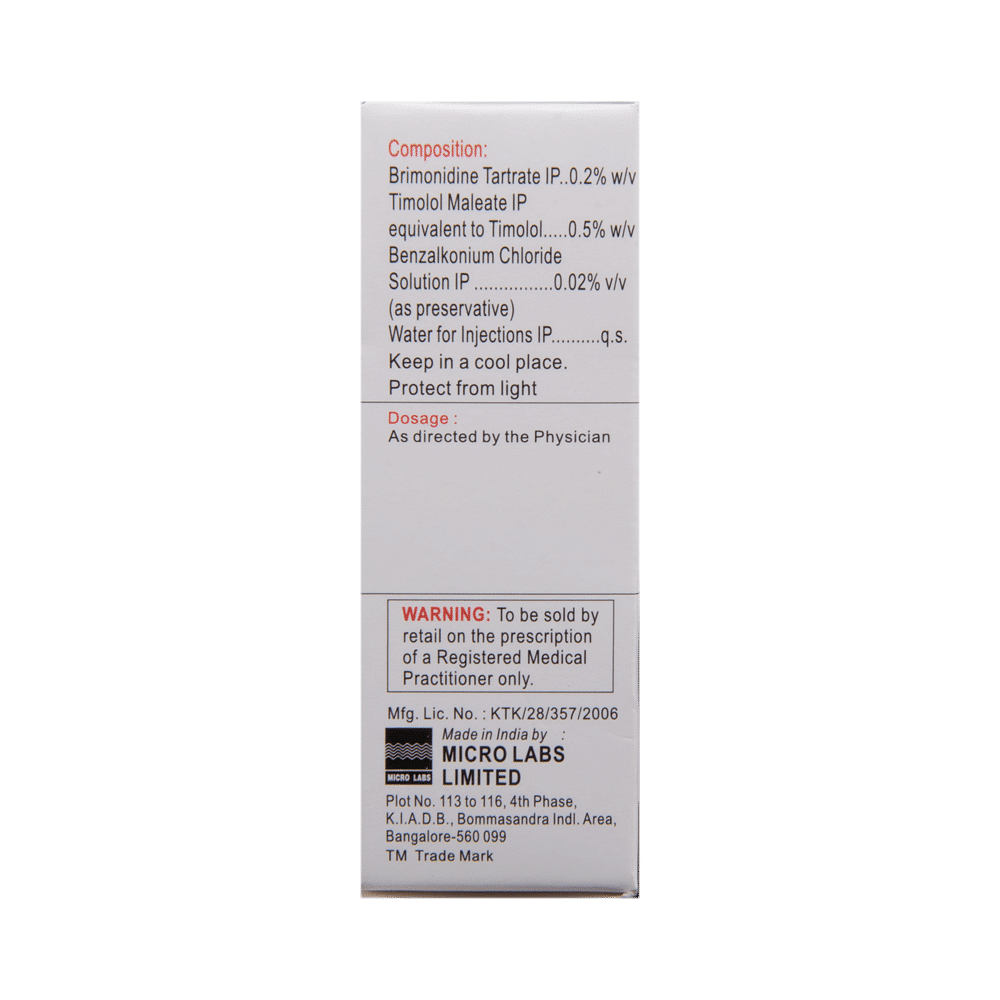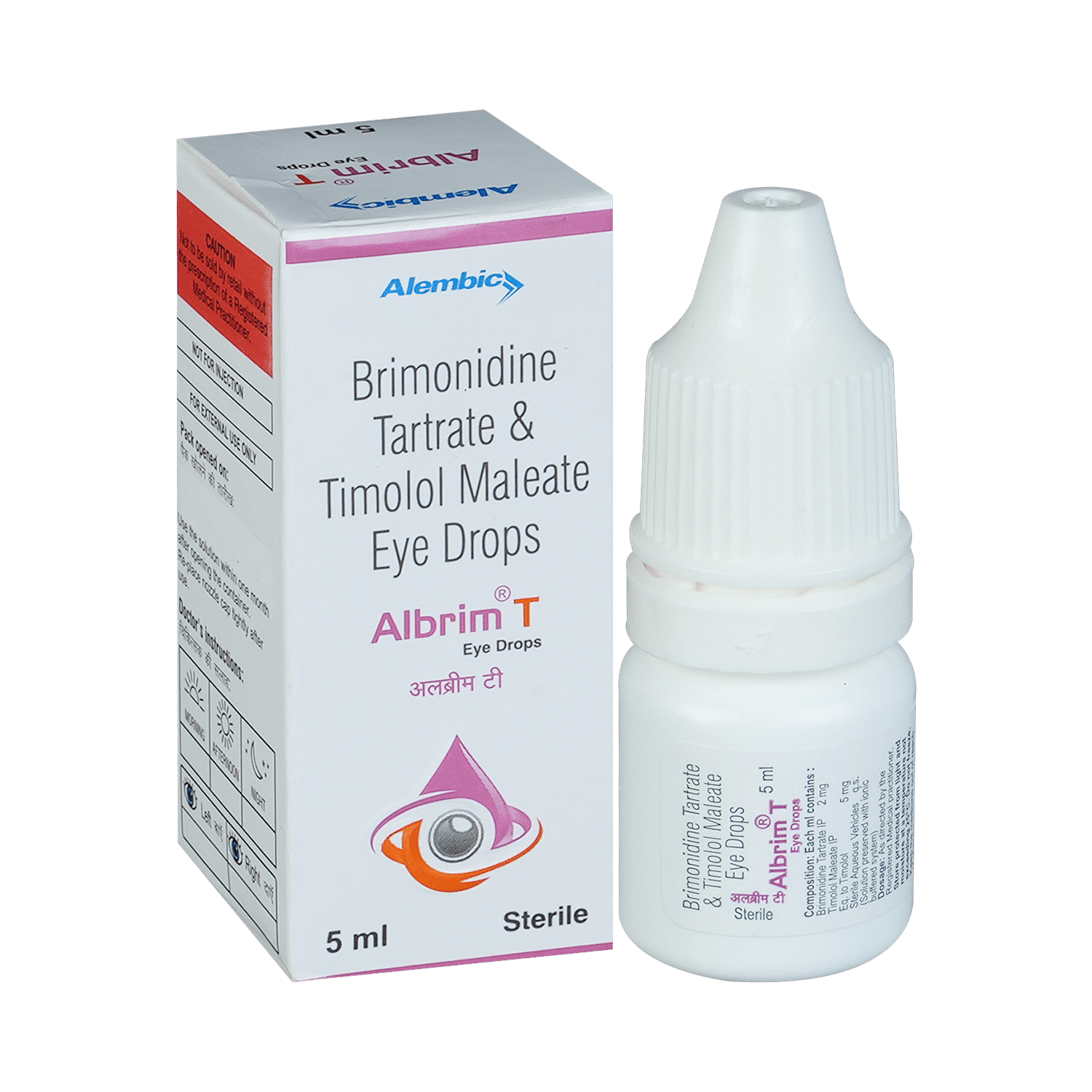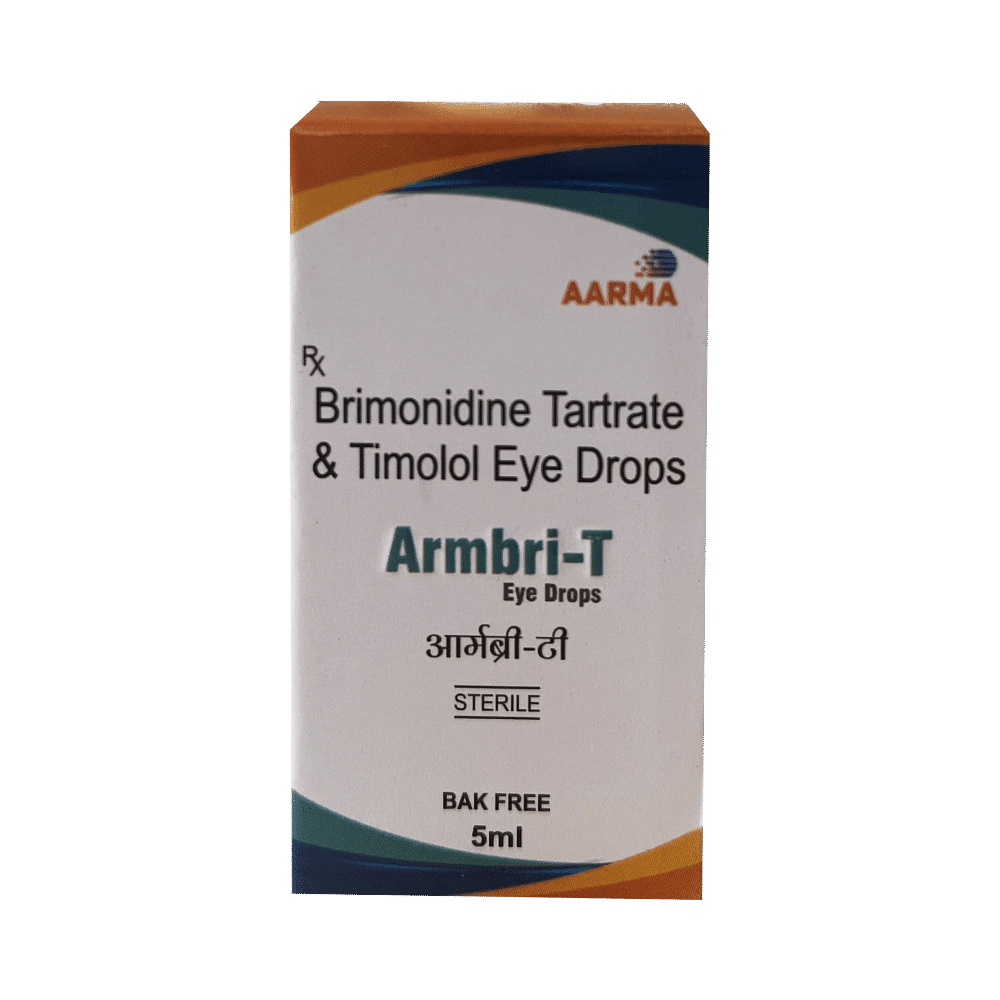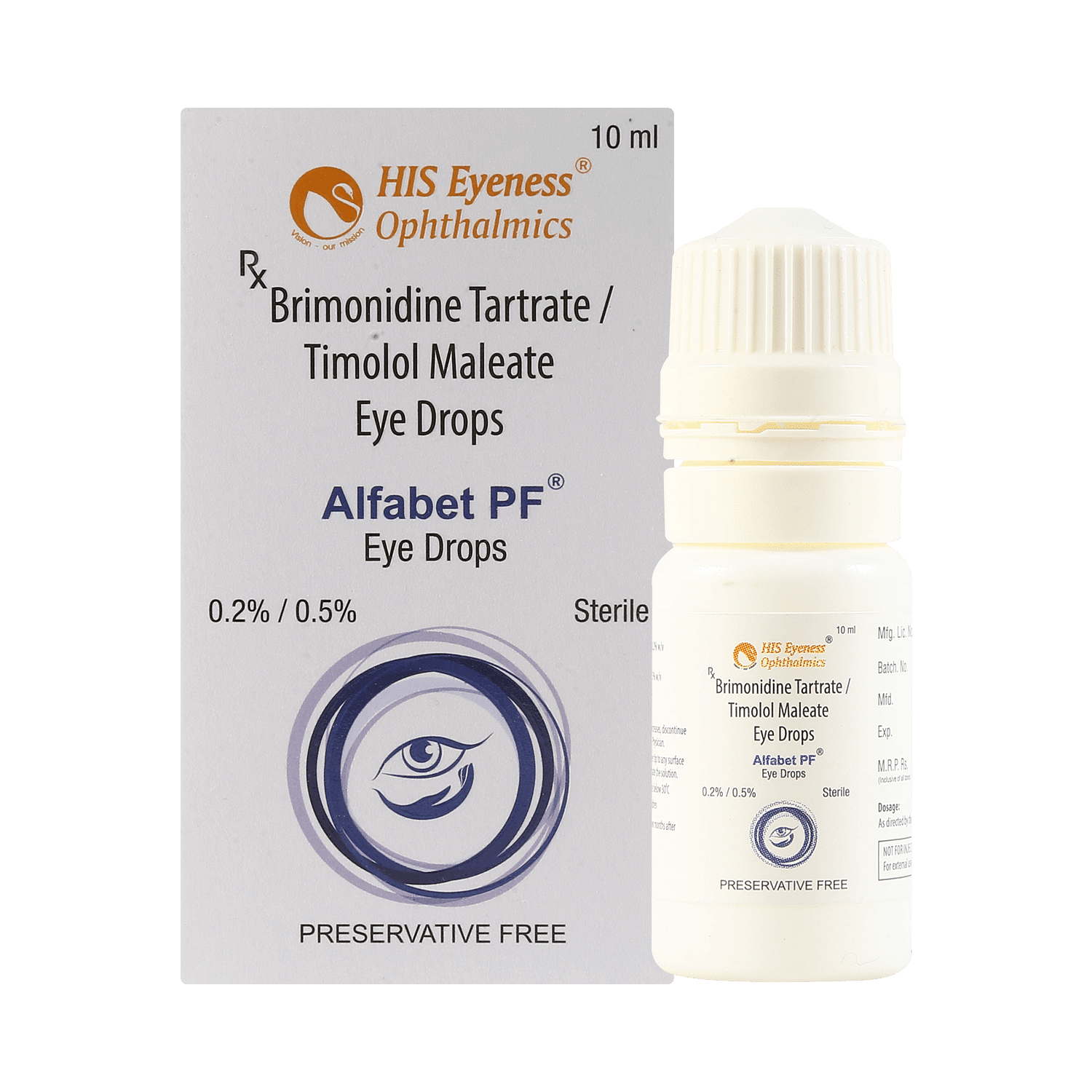
Alfabet Eye Drop
Manufacturer
His Eyeness Ophthalmics Pvt Ltd
Salt Composition
Timolol (0.5% w/v) + Brimonidine (0.2% w/v)
Key Information
Short Description
Alfabet Eye Drop is a prescription medicine used for the treatment of pressure in the eyes (ocular hypertension) and glaucoma.
Dosage Form
Eye Drop
Introduction
Alfabet Eye Drop is a combination of two medicines that lowers high pressure in the eye and reduces the risk of vision loss. It works by decreasing the pressure of fluid in the eye (aqueous humor), which helps in lowering the increased eye pressure.
Directions for Use
This medicine is for external use only. Use it in the dose and duration as advised by your doctor. Check the label for directions before use. Hold the dropper close to the eye without touching it. Gently squeeze the dropper and place the medicine inside the lower eyelid. Wipe off the extra liquid.
Safety Information
Side Effects
No common side effects listed
Alcohol Warning
No interaction found/established
Breastfeeding Warning
Information regarding the use of Alfabet Eye Drop during breastfeeding is not available. Please consult your doctor.
Pregnancy Warning
Information regarding the use of Alfabet Eye Drop during pregnancy is not available. Please consult your doctor.
How it works
Alfabet Eye Drop is a combination of two medicines: Timolol and Brimonidine. Timolol is a beta blocker while Brimonidine is a sympathomimetic. They work by decreasing the production of aqueous humor (fluid in the eye) thereby lowering the increased eye pressure.
Quick Tips
Apply pressure on the corner of the eye (close to the nose) for about 1 minute immediately after instilling the drop. Do not touch the tip of the dropper to any surface or to your eye to avoid contaminating the eye drops. Wait for at least 5-10 minutes before delivering the next medication in the same eye to avoid dilution. It may cause short term blurring of vision when first used. Use caution before driving or using machines. It may cause temporary burning or itching sensation in the eye. Inform your doctor if this does not go away.
Related Medicines

Betabrim Eye Drop

Albrim T Eye Drop

Armbri-T Eye Drop

Timobrim Eye Drop

Alfabet PF Eye Drop

Rimoflo-T Eye Drop BAK Free

Brimofit Eye Drop

Ruflom T Eye Drop

Britim Eye Drop

Brombal T Eye Drop
Frequently asked questions
How to properly administer Alfabet Eye Drop?
Before using Alfabet Eye Drop, wash your hands thoroughly to prevent contamination and avoid touching the tip of the dropper. If you wear contact lenses, remove them before applying the eye drops. To apply the medication, gently tilt your head back, look upwards, and pull down your lower eyelid to create a small pouch. Then, place one or two drops into the pouch as directed by your doctor.
Can I stop using Alfabet Eye Drop once my symptoms improve?
No, it is essential to continue using Alfabet Eye Drop exactly as advised by your doctor, even if your symptoms seem to have improved. If you experience any issues or concerns while using this medication, consult with your doctor for a re-evaluation of your treatment plan.
Can Alfabet Eye Drop cause blurred vision?
Yes, Alfabet Eye Drop may temporarily blur your eyesight. To ensure your safety, avoid operating machinery or driving just after applying the eye drops. If you experience any issues with your vision, contact your doctor for guidance.
How should I store and dispose of Alfabet Eye Drop?
Keep Alfabet Eye Drop in its original container, tightly closed, to prevent contamination and ensure proper storage. Follow the instructions provided on the packaging or label for specific storage guidelines. Dispose of any unused medication responsibly, ensuring it is not consumed by pets, children, or other individuals.
Are there any contraindications associated with using Alfabet Eye Drop?
Alfabet Eye Drop should not be used by patients who are hypersensitive to Timolol or Brimonidine, or any of their constituents. This medication is also contraindicated for patients with airway disease, lung disease, or heart disease. Additionally, it should not be used in children under the age of 2 years.


